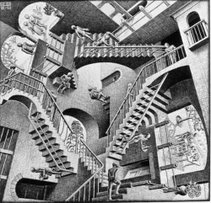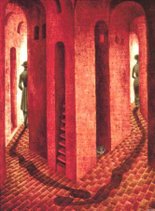But even I can see some patterns here.
你 好 (Nǐ hǎo): Hi!


谢谢 (xièxie): Thanks

妈妈 (māma): mum
 爸爸 (bàba): dad
爸爸 (bàba): dad
我 是 中国人 (wǒ shì Zhōngguórén): I am Chinese





中国 (Zhōngguó): China
美国 (Měiguó): U. S. A.
美国 (Měiguó): U. S. A.

英国 (Yīngguó): Britain

墨西哥 (mò xī gē): Mexico, 墨西哥人 (mò xī gē rén): Mexican person
法国 (Fǎguó): France, 法国人 (Fǎguórén): French person
德国 (Déguó): Germany, 德国人 (Déguórén): German person
日本 (Rīběn): Japan, 日本人 (Rīběnrén): Japanese person
他 (tā): he, 她 (tā): she
我们 (wǒmen): we, 你们 (nǐmen): you (plural)
法国 (Fǎguó): France, 法国人 (Fǎguórén): French person
德国 (Déguó): Germany, 德国人 (Déguórén): German person
日本 (Rīběn): Japan, 日本人 (Rīběnrén): Japanese person
他 (tā): he, 她 (tā): she
我们 (wǒmen): we, 你们 (nǐmen): you (plural)
 All the lovely strokes were taken from this site.
All the lovely strokes were taken from this site.OMG! Of course nobody is expecting ME to learn how to WRITE that down! It is an art!
An interesting thing I noticed while searching for the images is the different meanings of some of the words.
美, one of the "components" for "US.A." also means "beautiful". And 英, the starter for "Britain" also means "brave".
It is also interesting to notice the words for "he" and "she". They are spelled 他 and 她, respectively. But they are pronounced the same. 牠 and 它 are third person singular too. They correspond to the animate and inanimate "it", respectively. And they are also pronounced tā!
Originally, Chinese had no distinction for gender in the second and third person pronouns, and no distinction for animacy in the third person either. In fact, in the spoken language, they remain undifferentiated. These characters were created in response to contact with the West and its gender and animacy indicating pronouns.











No comments:
Post a Comment